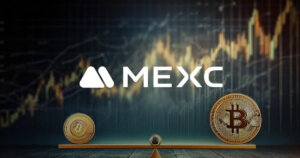 From De-Fi and payments to NFTs: what is driving crypto’s value in 2021?
From De-Fi and payments to NFTs: what is driving crypto’s value in 2021? From De-Fi and payments to NFTs: what is driving crypto’s value in 2021?

Cover art/illustration via CryptoSlate. Image includes combined content which may include AI-generated content.
Insiders are understandably enthusiastic about the significant potential Decentralized Finance (DeFi) holds for its users. From lending crypto to others that need it in return for a yield, to taking out loans without ever needing to sign your name or interact with another human, to speculating with no broker involvement, to smart algorithms that can and optimize investment portfolios, De-Fi is set to shake up the way we do things.
Of course, for the majority of people, crypto and blockchain are still foreign concepts they have either never heard of or do not understand. But that may be set to change soon, as there is more and more evidence that decentralized ledger technologies (DLTs) are penetrating into the mainstream. Major corporates are adding cryptos to their holdings.
Take MicroStrategy for instance, which now holds over $4 billion worth of Bitcoin, and has seriously amplified its market cap in the process. Or Square and Fidelity, who have both enhanced their portfolios and funds with cryptos. Goldman Sachs is opening a new crypto trading desk for its clients. These are just a few examples that demonstrate mainstream adoption is picking up pace, and we expect this trend to continue.
What has happened to Bitcoin?
One reason for optimism is the rise and rise of cryptocurrencies. And no example tells that story better than Bitcoin. Just a little over 10 years ago, Bitcoin was an asset that few considered important but recently became the first crypto unicorn as it passed a market cap of over one trillion dollars. Bitcoin has surpassed Facebook and other tech giants in value according to CoinMarketCap, making it exceedingly difficult for investors to continue to overlook. At the same time, some of the largest and most influential companies in the world have begun accepting Bitcoin as a means of payment for their products and services. Notable brands to do so include AT&T, Burger King, and even Microsoft despite Bill Gates’ skepticism of Bitcoin for years until recently taking a ‘neutral view’.
What is driving the price?
There are plenty of stats we’re seeing in the industry right now that give an indication of why the value of crypto is booming.
In the first month of 2021, the total number of global crypto users rose to 106 million people. That is great news for two reasons. First of all, traditionally for something to be considered mainstream it has to have over 50,000,000 users; twice as many people are familiar with crypto. And at the same time, google searches for Bitcoin haven’t yet hit their previous all-time-highs.
It shows that there is much more room to grow, with only a fraction of the global population engaged to date. So despite the rapid acceleration of the industry, it is still in the early stages of its adoption cycle.
The more public interest there is in crypto, the more the price of those digital assets inevitably rise due to increased demand, especially as there is a feeling that we’ve barely even scratched the surface yet.
Everyone’s talking about NFTs
Yes, NFTs (non-fungible tokens) is the latest industry craze, but do they make sense? Look at Bansky’s burnt piece of artwork. Was that cool or was that just non-sensical, burning an original piece? As with all art, the value is in the eye of the beholder. The speculative market for NFTs is soaring (case in point – a digital piece just sold for $69 million at a Christie’s auction). It is these same investors who trade cryptos that are now immersing themselves in the world of NFTs, where collectible digital art is verified through blockchain technology.
We think digitizing artwork has some merit, in fact, anything nonfungible, i.e. unique and non-replaceable is a good idea. However, isn’t the main point of art for it to be seen by as many people as possible. If you hold it on your computer, then no one else gets to see and enjoy it apart from you. This makes it more of an investment than an item of beauty to be enjoyed, but some might say is more of an indication of the art market at large. An obvious boost for the creator economy which comes from this technology is that it’s now possible for artists to collect royalties from all future re-sales of their work. And that is massive.
Plus, it’s not just about art – take NBAtopshot.com were moments from NBA games are digitized and sold via their dedicated NFT blockchain – “Flow.” On a recent weekend, more than 200,000 people logged in bidding for these NFTs.
When it comes to NFTs, are we trying to find a solution to a problem that doesn’t exist in the first place? This touches on the philosophical and the point is that everyone will have their own opinion about this, just as they will about individual pieces of art.
The future of cryptocurrencies
The future of cryptocurrencies is very bright, and we see a world where much is tokenized and everyone is using blockchain technology in some capacity. It may take a little more time for us to get to this fully blockchain-powered economy, but we are definitely on the right track. Here’s to many more exciting developments in 2021 and beyond.
We are expanding our services fast to meet the growing needs of our crypto users, as we realize just how important they are to the future of payments. We recently launched a new feature where users can withdraw directly to external crypto wallets, read here to find out more.



 DappRadar
DappRadar 










































































